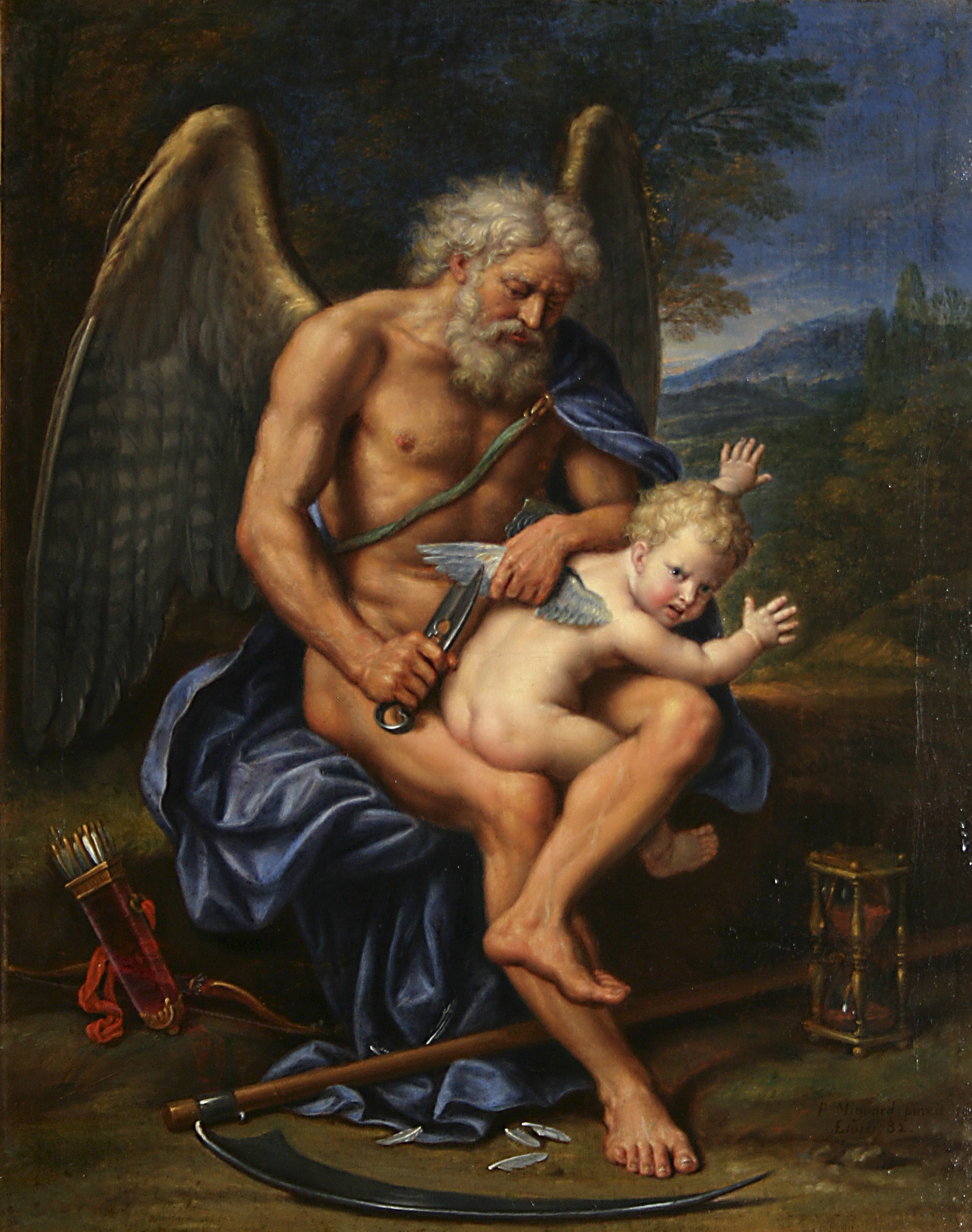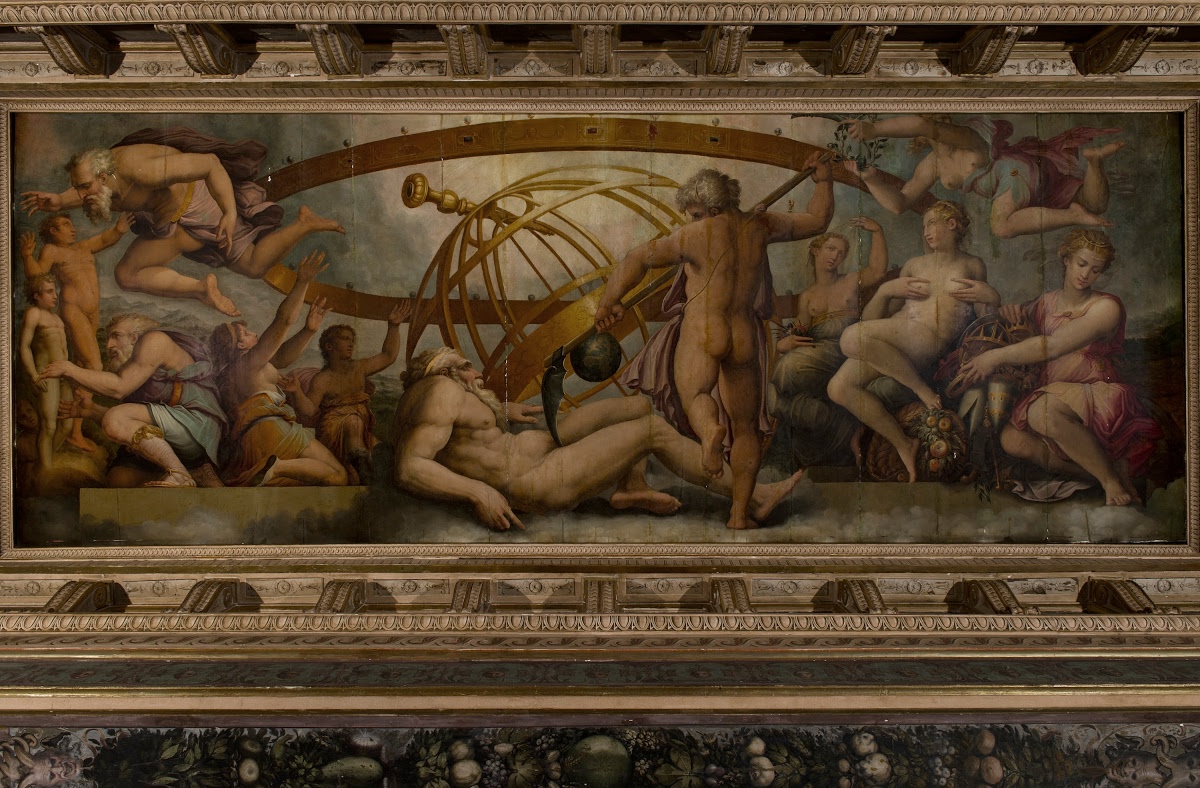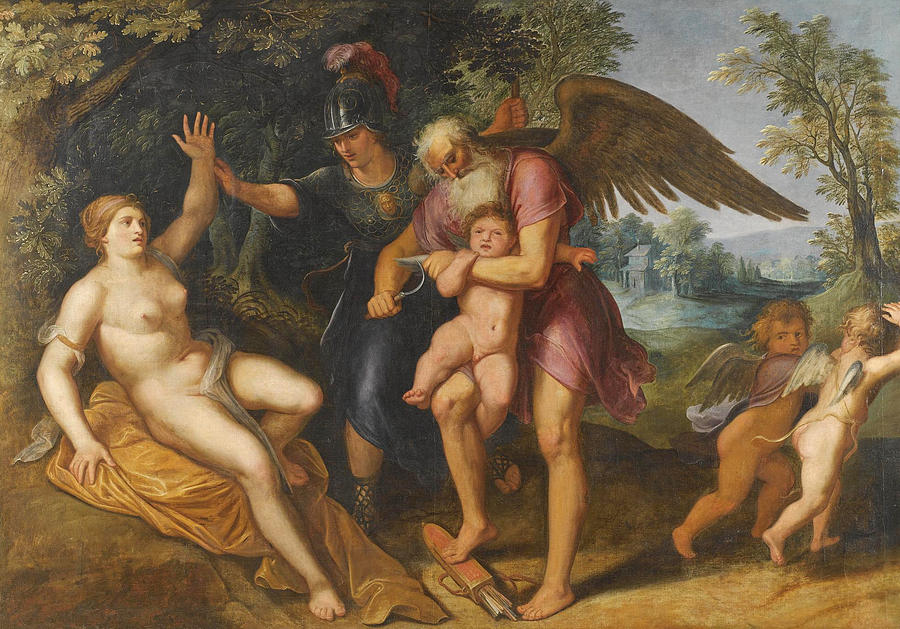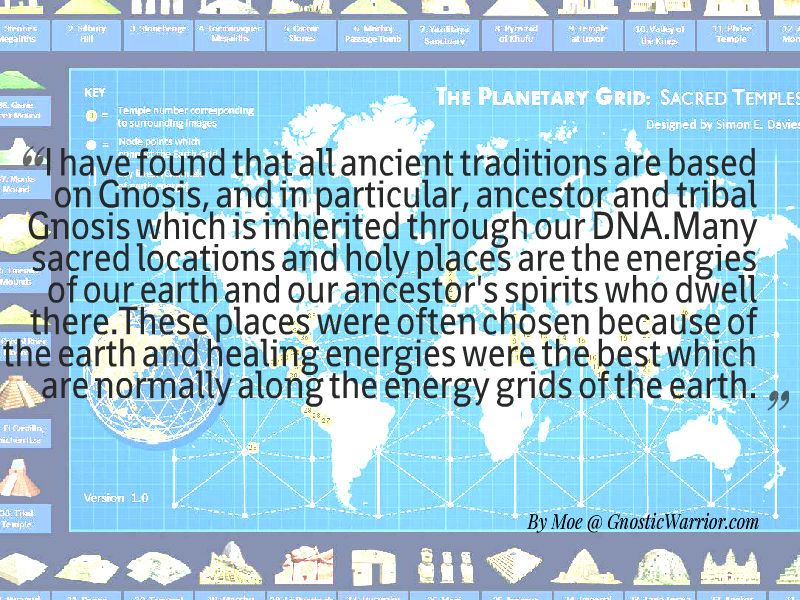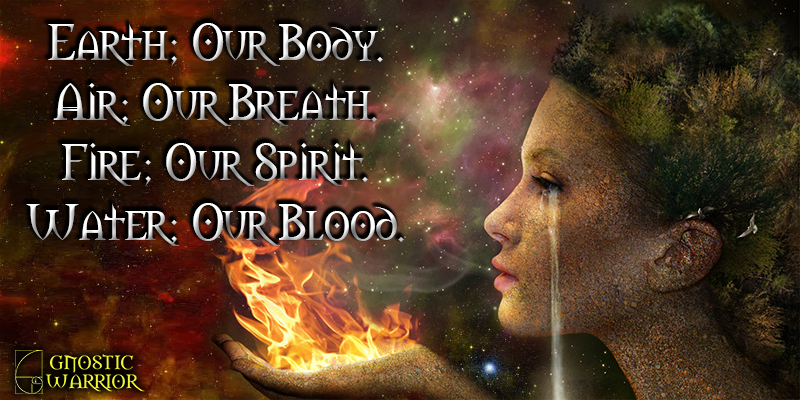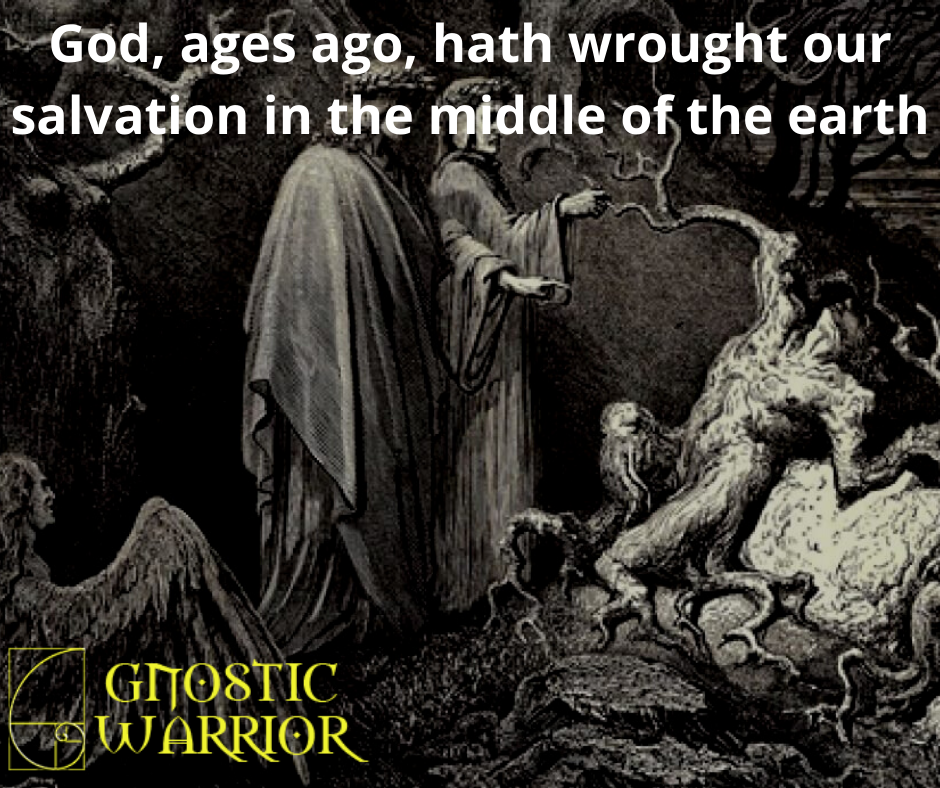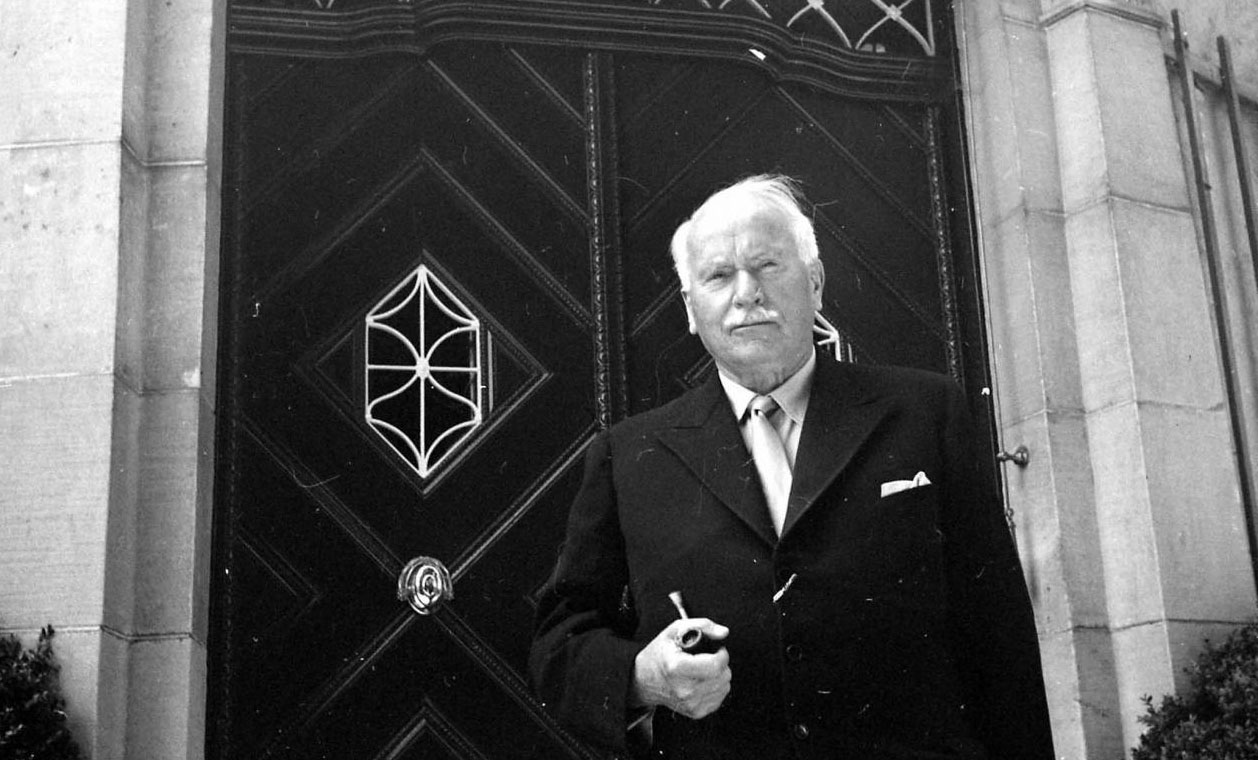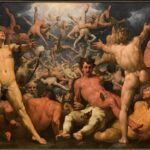In Greek mythology, Kronus (Cronus or Kronos) was the Lord of Justice, Evil, and the Harvest, and in Rome, he was allegorically called Saturn. He was the leader of the first generation of the Titans who overthrew his father, Ouranos Our-anus, and ruled during the mythological Golden Age.
To prevent any of his sons or daughters from ruling in his stead, he had a habit of “eating them.”
The first source in history to give us the origins of this myth is the Phoenician historian and a priest of Byblos, Sanchuniathon (Phoenician: 𐤎𐤊𐤍𐤉𐤕𐤍) who tells us Môt means Death but also represents Kronus. He says some people call it by the name Ilus (Mud), which is described as a “putrefaction of a watery mixture,” from this sprung all the seed of the creation and the generation of the universe. Sanchuniathon also explains that this Môt AKA Ilus (Mud) ‘s name is also Kronus, whose father is Our-anus, situated in the middle of the earth. He had written;
“In the thirty-second year of his power and reign, Ilus, who is Kronus, having laid an ambuscade for his father Ouranus in a certain place situated in the middle of the earth, when he had got him into his hands dismembered him over against the fountains and rivers. There Ouranus was consecrated, and his spirit was separated, and the blood of his parts flowed into the fountains and the waters of the rivers; and the place, which was the scene of this transaction, is shewed even to this day.”
The history from Sanchuniathon can be verified in the Hebrew (Phoenician) Scripture, Môt (Maweth, Mot, Mavet(h) means Death and is sometimes personified as a devil or angel of Death (e.g., Habakkuk 2:5; Job 18:13). In both the Book of Hosea and the Book of Jeremiah, Maweth/Mot is mentioned as a deity to whom Yahweh can turn over Judah as punishment for worshiping other gods. Philo of Byblos described môt (Muth), as the equivalent of both Thanatos (Death personified) and Pluto.
We learn from Plato that he bounds his victims in his famous chains that are inescapable.
“[Has] Kronos (Cronus) bound them with his famous chains?” His chains are inescapable. (Plato, Cratylus 403e)
Where does he keep these people in chains?
Hesiod says that Kronos and the Titans live under Tartarus; “The Titanes under Tartaros (Tartarus) who live with Kronos (Cronus).” (Hesiod, Theogony 820)
Homer also writes in the Ilias that Tartarus binds them; “The undermost limits of earth and sea, where Iapetos and Kronos seated have no shining of the sun-god Hyperion to delight them nor winds’ delight, but Tartaros stands deeply about them.” (Iliad 8. 479)
Tartarus in Greek mythology is the deep abyss and a type of underground dungeon of torment and suffering for the wicked and as the prison for the Titans and, in later myths, for mortals who committed unforgivable sins. According to the Greek poets, Homer and Hesiod, Tartarus is a type of spherical force that reaches the great cosmic pit beneath the earth. It is located “as far beneath the house of Hades as from earth the sky lies, and he is both a deity (god or force) and a place in the underworld.”
Hesiod (c. 700 BCE) depicts it as Misty Tartarus’, stating that it was “as far below the earth as heaven is from the earth” (722-25). He describes Tartarus “as a vast chasm, both dismal and dank and a place of decay,” and states, “Tartarus is one of the first beings to have emerged at the creation of the universe and was the opposite of Gaia (Earth).” Hesiod said it is the unfruitful sea (pontos) where there are shining gates and an immoveable threshold of bronze having unending roots, and it is grown of itself.”
In the Orphic cosmogony, Kronus was the incorporeal and primordial god of time who emerged self-formed at the dawn of creation. He was often depicted in serpentine form, with three heads–a man, a bull, and a lion. His consort, the serpentine goddess Ananke (Inevitability), enveloped the primordial world-egg in their coils and split it apart to form the ordered universe of earth, sea, and sky. After this act of creation, the couple circled the cosmos driving the rotation of heaven and the eternal passage of time.
In the Orphic theogonies from the 2nd Century B.C., genealogical works similar to the Theogony of Sanchuniathon and Hesiod details the beginning of this myth concealing this science;
“Originally there was Hydros (Water), he [Orpheus] says, and Mud, from which Ge (Gaea, the Earth) solidified : he posits these two as first principles, water and earth . . . The one before the two [Thesis, Creation], however, he leaves unexpressed, his very silence being anintimation of its ineffable nature.
The third principle [Khronos (Chronos), Time] after the two was engendered by these–Ge (Earth) and Hydros (Water), that is–and was a Serpent (Drakon) with extra heads growing upon it of a bull and a lion, and a god’s countenance in the middle; it had wings upon its shoulders, and its name was Khronos (Chronos, Unaging Time) and also Herakles (Heracles). United with it was Ananke (Inevitability, Compulsion), being of the same nature, or Adrastea, incorporeal, her arms extended throughout the universe and touching its extremities.” (Orphica, Theogonies Fragment 54 from Damascius C3rd – C2nd B.C.)
Orphica, Rhapsodies Fragment 66 :
“This Khronos (Chronos, Unaging Time), of immortal resource, begot Aither (Aether, Light) [upper air] and great Khaos (Chaos, the Chasm) [lower air], vast this way and that, no limit below it, no base, no place to settle. Then great Khronos fashioned from (or in) divine Aither (Aether) a bright white egg [from which Phanes was born].”
Orphica, Epicuras Fragment (from Epiphanius);
“And he [Epicurus] says that the world began in the likeness of an egg, and the Wind [the entwined forms of Khronos (Chronos, Time) and Ananke (Inevitability)] encircling the egg serpent-fashion like a wreath or a belt then began to constrict nature.
As it tried to squeeze all the matter with greater force, it divided the world into the two hemispheres, and after that, the atoms sorted themselves out, the lighter and finer ones in the universe floating above and becoming the Bright Air [Aither (Aether)] and the most rarefied Wind [probably Khaos (Chaos, Air)], while the heaviest and dirtiest have veered down, become the Earth (Ge) [Gaia], both the dry land and the fluid waters [Pontos the Sea]. And the atoms move by themselves and through themselves within the revolution of the Sky and the Stars, everything still being driven round by the serpentiform wind [of Khronos and Ananke].”
As it relates to the humans, Hesiod, said the Kronus was the youngest son of Rhea and the most terrible of all her children;
“She [Gaia, Earth] lay with Ouranos (Uranus, Sky) and bare deep-swirling Okeanos (Oceanus), Koios (Coeus) and Krios (Crius) and Hyperion and Iapetos (Iapetus), Theia and Rhea, Themis and Mnemosyne and gold-crowned Phoibe (Phoebe) and lovely Tethys. After them was born Kronos (Cronus) the wily, youngest and most terrible of her children, and he hated his lusty sire . . .
And he [Ouranos] used to hide them all [Hekatonkheires (Hecatoncheires) and Kyklopes (Cyclopes), brothers of the Titanes] away in a secret place of Earth (Gaia) so soon as each was born, and would not suffer them to come up into the light: and Ouranos (Sky) rejoiced in his evil doing. But vast Gaia (Earth) groaned within, being straitened, and she made the element of grey flint and shaped a great sickle, and told her plan to her dear sons [the six Titanes].
And she spoke, cheering them, while she was vexed in her dear heart: ‘My children, gotten of a sinful father, if you will obey me, we should punish the vile outrage of your father; for he first thought of doing shameful things.’ So she said, but fear seized them all, and none of them uttered a word. But great Kronos the wily took courage and answered his dear mother: ‘Mother, I will undertake to do this deed.’
So he said: and vast Gaia (Earth) rejoiced greatly in spirit, and set and hid him in an ambush, and put in his hands a jagged sickle, and revealed to him the whole plot.” (Theogony 133 ff -trans. Evelyn-White) :
Ovid tells us about the human anatomical nature in Fasti that Kronus eats his children, and then they become “entombed in his bowels,” and then a mysterious stone in the form of Zeus gets lodged in what Ovid calls a gullet, which means his esophagus. He had written;
“Saturnus [Kronos (Cronus)] received this oracle: ‘Best of kings, you shall be knocked from power by a son.’ Jabbed by fear, he devours his offspring as they are born and entombs them in his bowels. Rhea often complained of much pregnancy and no motherhood and mourned her fertility.
The story of Cronus eating his children and his name also being Mot AKA Ilus (Mud) ‘s, which is a “putrefaction of a watery mixture,” whose father is Our-anus situated in the middle of the earth is interpreted by some people like me as an allegory to a specific aspect of time held within Cronus’ sphere of influence.
This sphere, I contend, deals with an ancient science that connects Kronus via the earth’s magnetic biosphere, as I explained in my essay, Human Magnetoreception: The Science of the Noosphere vs. the Animal Sphere to our Stomachs or Gi Tracts, which science has proved is our second brain – The Realm of Kronus. In Christianity, this is the devil’s lair, and Satan is chief of his legions of Demons, i.e., human beasts, which the Hebrews called Behemoths. It is Carl Jung’s collective unconscious.
As we learn from Apollonius Rhodius;
“A number of creatures whose ill-assorted limbs declared them to be neither man nor beast had gathered round her [Kirke (Circe) the witch] like a great flock of sheep following their shepherd from the fold, Nondescript monsters such as these, fitted with miscellaneous limbs, were once produced spontaneously by Ge (Gaea, the Earth) out of the primeval mud, when she had not yet solidified under a rainless sky and was deriving no moisture from the blazing sun. But Khronos (Chronos, Time), combining this with that, brought the animal creation into order.” (Argonautica 4. 673 ff trans. Rieu C3rd B.C.)
I believe that it can be considered as a type of animal mind or, Biblically speaking, the mind of the flesh i.e., Sarka that is connected to this “putrefaction of a watery mixture,” AKA fungi/molds whose sphere of influence via their endless mycelium (chains, fetters) and spores (seeds) is within Tartarus or within the earth underneath our feet.
As I have explained in many numerous essays, molds/fungi have been scientifically proven to cause illness, disease often from working within our bowels and also mental psychopathologies, which can influence our thoughts in a bad way, which may explain Cronus’ violent nature and without hesitation, he eats his children. He is often depicted holding a sickle or ravaging some human while still alive.
As Ovid relates, Kronus, with his anger stirs the mighty Titans who are imprisoned in a “black grove with a triple wall,” which would be a depiction of the molds/fungi’s legislating abilities of humankind. Ovid had written;
“Saturnus [Kronos (Cronus)] was thrust from his realm by Jove [Zeus]. In anger he stirs the mighty Titanes to arms and seeks the assistance owed by fate. There was a shocking monster born of Mother Terra (Earth) [Gaia], a bull, whose back half was a serpent. Roaring Styx [as an ally of Zeus] imprisoned it, warned by the three Parcae [Moirai, Fates], in a black grove with a triple wall.
Whoever fed the bull’s guts to consuming flames was destined to defeat the eternal gods. Briareus [or Aigaion, an ally of Kronos] slays it with an adamantine axe and prepares to feed the flames its innards [and so ensure the victory of the Titanes]. Jupiter [Zeus] commands the birds to grab them; the kite brought them to him and reached the stars on merit.”
The rule of Kronus is not indefinite. In the Greek Myths, we learn that he rules a “space in time” and is eventually conquered and bound by Zeus or Jove.
The Roman rhetorician C1st B.C., Cicero had written;
“Another theory also, and that a scientific one, has been the source of a number of deities, who clad in human form have furnished the poets with legends and have filled man’s life with superstitions of all sorts. This subject was handled by Zeno and was later explained more fully by Cleanthes and Chrysippus. For example, an ancient belief prevailed throughout Greece that Caelus (the Sky) [Ouranos (Uranus)] was mutilated by his son Saturnus [Kronos (Cronus)], and Saturnus himself thrown into bondage by his son Jove [Zeus]: now these immoral fables enshrined a decidedly clever scientific theory.
Their meaning was that the highest element of celestial ether or fire [Ouranos the Sky], which by itself generates all things, is devoid of that bodily part which required union with another for the work of procreation. By Saturnus [Kronos] again they denoted that being who maintains the course and revolution of the seasons and periods of time, the deity so designated in Greek, for Saturnus’ Greek name is Kronos (Cronus), which is the same as khronos, a space of time.
The Latin designation ‘Saturnus’ on the other hand is due to the fact that he is ‘saturated’ or ‘satiated with years’ (anni); the fable is that he was in the habit of devouring his sons–meaning that Time devours the ages and gorges himself insatiably with the years that are past. Saturnus is bound by Jove [Zeus] in order that Time’s courses might not be unlimited, and that Jove might fetter him by the bonds of the stars.” (Cicero, De Natura Deorum 2. 24 – trans. Rackham)
As the Greek Myths tell us, He was married to the “Goddess of the earth,” Rhea, by whom he became the father of Hestia, Demeter, Hera, Hades, Poseidon, and Zeus. Cheiron is also called a son of Kronus. (Hesiod. Theog. 137, 452, &c.; Apollod. i. 1. § 3, &c.) At the instigation of his mother, Cronus unmanned his father for having thrown the Cyclopes, who were likewise his children by Ge, into Tartarus. Out of the bloodshed sprang up the Erinyes. When the Cyclopes were delivered from Tartarus, the government of the world was taken from Uranus and given to Cronus, who in his turn lost it through Zeus.
After Rhea secretly gave birth to Zeus in Crete, to prevent Kronus from eating the infant, she handed Cronus a stone wrapped in swaddling clothes, also known as the Omphalos Stone, which he swallowed, thinking that it was his son, Zeus.
Once Zeus had grown up, he forced his father Kronus into puking out their children (Poseidon, Hera, Hades,etc.) and Zeus declared war on Kronos. He was said to have made him regurgitate the contents of his stomach in reverse order: first, the stone, which was set down at Pytho under the glens of Mount Parnassus to be a sign to mortal men, and then his two brothers and three sisters.”
The Titans were conquered by Zeus and cast into the pit of Tartarus reversing the shift in cosmological terms from being holders of heaven to bearers of the entire cosmos. According to Pindar and Aeschylus, the Titans were eventually released from the pit through the clemency of Zeus.

Moe is the founder of GnosticWarrior.com. He is a father, husband, author, martial arts black belt, and an expert in Gnosticism, the occult, and esotericism.

